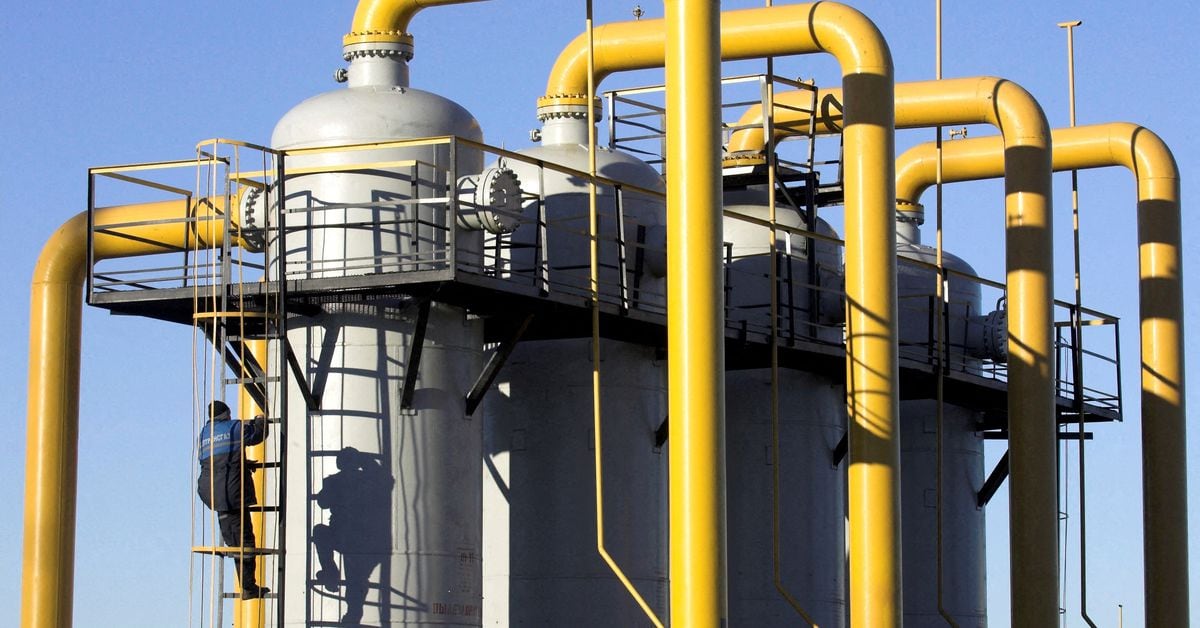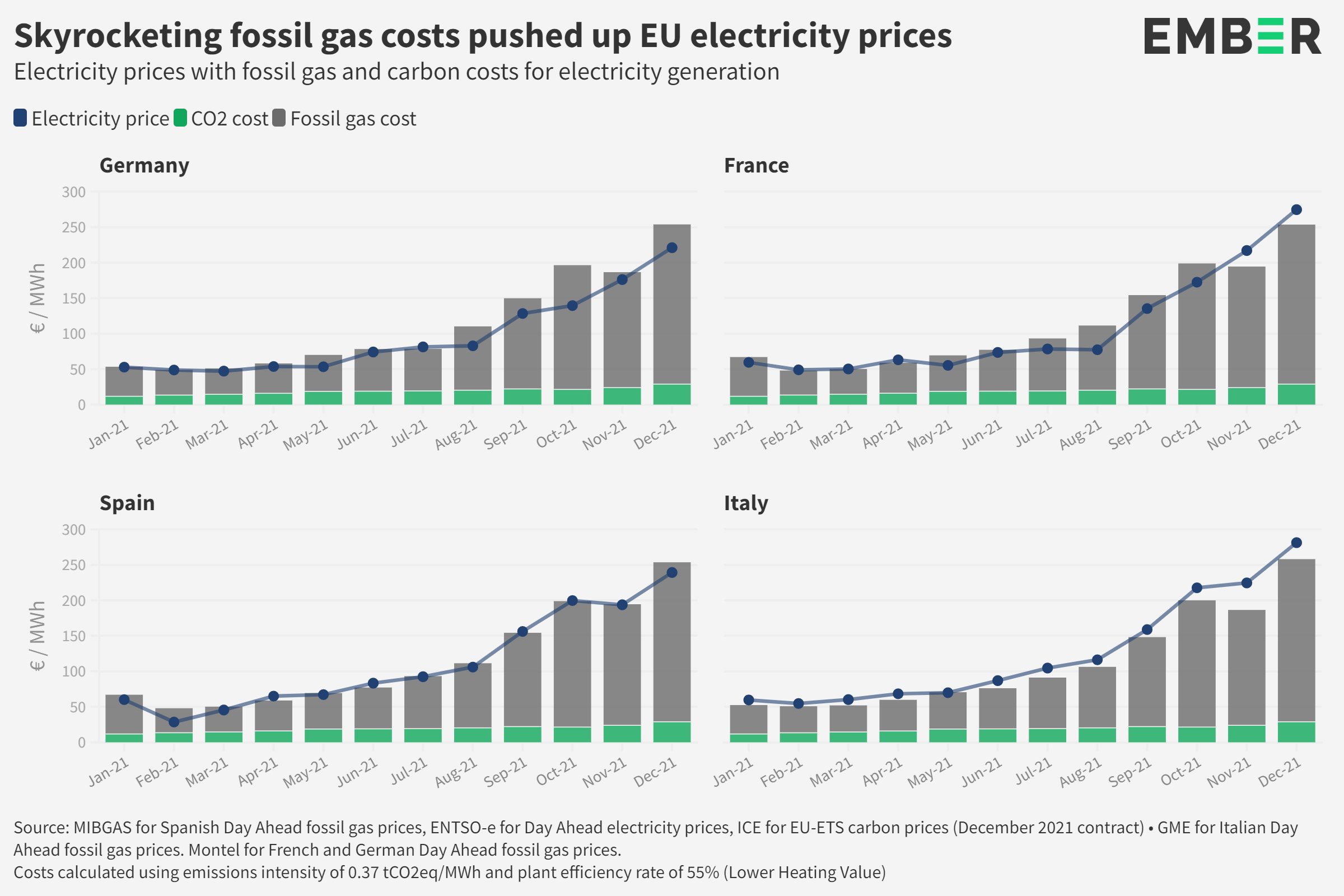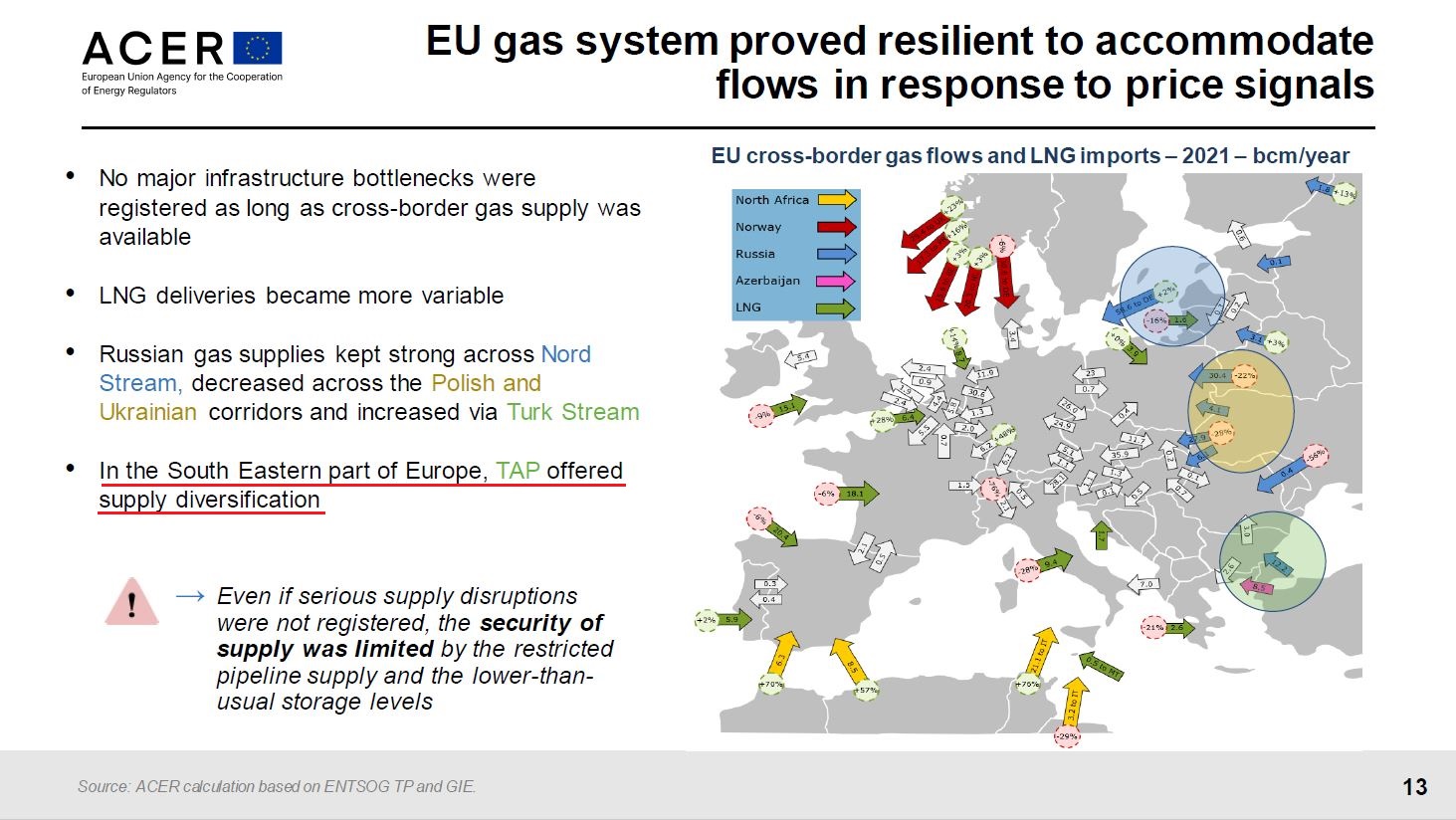“The escalation of the Russia-Ukraine crisis is likely to lead to higher energy costs and a longer period of global inflation for many countries”
Gopinath, First Deputy Director of the IMF
Russian Federation Council warns Europe will not buy gas if Russia is removed from SWIFT
If this gets serious, neither the USA nor the EU countries can even breathe. That job is not possible after oil prices are 200-300 dollars.
Latest Thread
- Bangladesh Qatar to recruit 800 Bangladesh armed forces personnel
- Australia Ultra Maritime Provides Next Generation Torpedo Defense to Australia’s Hunter Class Frigates
- Iran The new Shahed-161 jet drone
- Bangladesh Air-Force Bangladesh Air Force setting up drone manufacturing plant in JV with China
- Bangladesh Bangladesh eyes arms exports
You are using an out of date browser. It may not display this or other websites correctly.
You should upgrade or use an alternative browser.
You should upgrade or use an alternative browser.
World Energy Market
- Thread starter Bogeyman
- Start date
I read news that Indonesia signed 15 billions usd deal with some USA company about conversing coal into gas and side chemical products.
Does anyone has more information about that kind of technology in terms of EROEI and ecology impacts.
Does anyone has more information about that kind of technology in terms of EROEI and ecology impacts.
Last edited:
You mean this?I read news that Indonesia signed 15 billions usd deal with some USA company about conversing coal into gas and side chemical products.
Does anyone has more information about that kind of technology in terms of EROEI and ecology impacts.
Indonesia starts construction of $3.1b coal gasification plant to cut LPG imports
JAKARTA (REUTERS) - Indonesian President Joko Widodo launched construction of a US$2.3 billion coal gasification plant on Monday (Jan 24), in a bid to slash the country's liquefied petroleum gas (LPG) imports while optimising its coal resources. Read more at straitstimes.com. Read more at...
In terms of EROEI, that's around a 5:1 conversion ratio so not particularly good but given that coal is something that Indonesia produces heaps of, it seems like that's an acceptable trade-off. In terms of pollution, also not very good, but Indonesia has few options in that regard for now.
What i read was 15bill deal and side chemicals extraction.You mean this?

Indonesia starts construction of $3.1b coal gasification plant to cut LPG imports
JAKARTA (REUTERS) - Indonesian President Joko Widodo launched construction of a US$2.3 billion coal gasification plant on Monday (Jan 24), in a bid to slash the country's liquefied petroleum gas (LPG) imports while optimising its coal resources. Read more at straitstimes.com. Read more at...www.straitstimes.com
In terms of EROEI, that's around a 5:1 conversion ratio so not particularly good but given that coal is something that Indonesia produces heaps of, it seems like that's an acceptable trade-off. In terms of pollution, also not very good, but Indonesia has few options in that regard for now.
What is problem with pollution here exactly, i would like to know about this matter little bit more, it is something worth considering for any country.
Hmm, I'll need to look deeper then, I haven't seen anything like that yet.What i read was 15bill deal and side chemicals extraction.
What is problem with pollution here exactly, i would like to know about this matter little bit more, it is something worth considering for any country.
The problem is that it wrecks air quality, especially in Indonesia's big cities, and can cause a lot of lung problems. For example, there's been research linking poor air quality with tuberculosis:
Association Between Ambient Air Pollution and Elevated Risk of Tuberculosis Development - PMC
Broad-scale evidence has shown the significant association between ambient air pollutants and the development of tuberculosis (TB). However, the impact of air quality on the risk of TB in Taiwan is still poorly understood. To develop a probabilistic ...
you probably mean on ecological impact of classic coal thermo plants with which i am familiar but my question was related to the ecology impact of transfer coal to gas.Hmm, I'll need to look deeper then, I haven't seen anything like that yet.
The problem is that it wrecks air quality, especially in Indonesia's big cities, and can cause a lot of lung problems. For example, there's been research linking poor air quality with tuberculosis:
Association Between Ambient Air Pollution and Elevated Risk of Tuberculosis Development - PMC
Broad-scale evidence has shown the significant association between ambient air pollutants and the development of tuberculosis (TB). However, the impact of air quality on the risk of TB in Taiwan is still poorly understood. To develop a probabilistic ...www.ncbi.nlm.nih.gov

Yamal-Europe Russian gas link at a halt after hints of westbound flows
Natural gas supplies between Poland and Germany via the Russian Yamal-Europe pipeline came to a halt on Wednesday, data from the German network operator Gascade showed, dashing expectations it was about to pump gas west for the first time since December.
A Renewable Energy Bubble Is Hit By the Perfect Storm
Good luck finding an industry hit as hard by inflation and supply-chain upheaval as wind-turbine makers.
Manufacturers like Vestas Wind Systems A/S have been blown off course by a perfect storm of transport snarl-ups and surging freight and raw material costs. Instead of raking in profits on soaring demand for clean energy, the Danish firm is struggling just to break even. Last week, loss-making European rival Siemens Gamesa Renewable Energy S.A ousted its chief executive officer — its second change at the top in less than two years. General Electric Co.’s renewables arm is also losing money.
This is a worrying turn for an industry with a vital role in helping the world decarbonize. For investors, it shows how betting on seemingly clear-cut “megatrends,” such as the rise of renewables, can backfire in the short-term. With oil prices rising above $90, oil stocks have massively outperformed clean tech in the past year. It’s a reminder, too, that even highly consolidated industries like wind-power machinery can struggle to pass on rising input costs to customers.
A year ago, the turbine makers were flying high. A gush of money flowed into clean-tech stocks, and investors didn’t have all that many wind-equipment firms to pick from. Outside of China, the three top players I’ve mentioned control around three-quarters of the onshore market. No wonder valuations ballooned.
But as the profit warnings piled up, the money flows faded and European wind stocks plummeted. Vestas’ has almost halved since last year’s peak, while Siemens Gamesa’s has fallen even more. Hedge funds have shorted the shares of smaller German turbine maker Nordex SE, betting that prices will fall further. (GE’s renewables unit isn’t separately listed.)
When you consider the size and complexity of a wind turbine, it’s no wonder they’re struggling: The rotors of high-spec onshore models span more than 160 meters (525 feet) and a nacelle (the central structure) can weigh several hundred tons. The latest offshore turbine designs are even larger.
Almost 85% of a wind turbine’s mass is comprised of steel, according to BloombergNEF. It’s not hard to imagine what’s happened to that bill of raw materials. Even after a recent pullback, steel prices are almost double pre-pandemic levels. Copper and resin prices have also surged.
Logistics is an even bigger headache. Due to the size of these machines and local rules, the process of assembling wind turbines is spread all over the world. That’s a challenge when supply chains are running smoothly. But delivery times for some components has increased from five to nearly 50 weeks, Siemens Gamesa said earlier this month. Delays add further cost and can trigger customer penalty clauses, making the transportation and installation of turbines, blades and towers very costly endeavors.
This wouldn’t be such a problem if manufacturers could quickly pass on cost increases to customers. Unfortunately, their order backlogs stem from a time when raw materials and logistics costs were much lower, and it appears they weren’t able to fully protect themselves against price increases via hedging. Analysts expect Siemens Gamesa to burn more than 750 million euros ($860 million) of cash in the fiscal year that ends in September, in part because it’s holding more inventory as a safety cushion against delays.
Though manufacturers are hiking prices — an abrupt change for a world accustomed to steadily falling equipment costs — customer discussions are difficult because it can threaten a project’s profitability. If completion is delayed but the developer has already sold the power, it could be forced to buy electricity at hugely inflated spot market prices. European wind farm operators were also hit last year by unusually low wind speeds. No wonder some of them are holding back from placing new orders.
While some of this is just bad luck, wind-turbine profit margins were already under pressure before the pandemic. Permit issues and NIMBYism have slowed project development in parts of Europe, while the shift from fixed-priced subsidies to more competitive wind auctions put downward pressure on pricing.
Manufacturers compensated by investing in larger, more powerful turbines, but they’ve suffered quality issues: Vestas’s warranty costs have increased due to blade repairs, while Siemens Gamesa had to make design changes to its new large onshore turbine.
In hindsight some of these companies shouldered too much risk. Now they’re belatedly strengthening cost-escalation clauses in supplier agreements and partnering with logistics firms to ensure priority shipments.
This new emphasis on protecting profitability should relieve investors. And there are additional grounds for guarded optimism. The rise in electricity prices far exceeds that of wind machinery costs and is expected to spur more demand for clean power generation, for example. The industry may also get a boost if the U.S. renews wind-power subsidies that expired last year. High-margin, multi-year maintenance contracts and offshore projects are other bright spots.
Still, the coming year or so looks like a slog. Long-suffering shareholders of Siemens Gamesa should hope controlling shareholder Siemens Energy AG bites the bullet and offers to buy them out at a premium. For everyone else, this brutal storm can’t pass soon enough.

A Renewable Energy Bubble Is Hit By the Perfect Storm
The wind industry still looks like a long-term winner, but it’s more vulnerable to supply-chain issues than investors appreciated.
The Russian energy sector was beginning to collapse at the prospect of being kicked out of SWIFT, even before Putin made the announcement. This has now become a daily reality.
Go and fill your car tank. Tomorrow will be too late. You don't have much time before the raises come, folks!
By the way, I say this for the whole world in general. Because after the Russians are removed from SWIFT, the barrel of oil will perhaps reach $200. So go and prepare while you still can.
@Nilgiri @Cabatli_53 @T-123456 @MisterLike @Zafer @Ryder @Fuzuli NL @Yasar @Saithan @Captain_Azeri_76
@Combat-Master @Zafer @Saithan @Yasar @Kartal1 @TheInsider @Test7 @mulj @Stimpy75 @Stuka @Oryx @Anmdt









